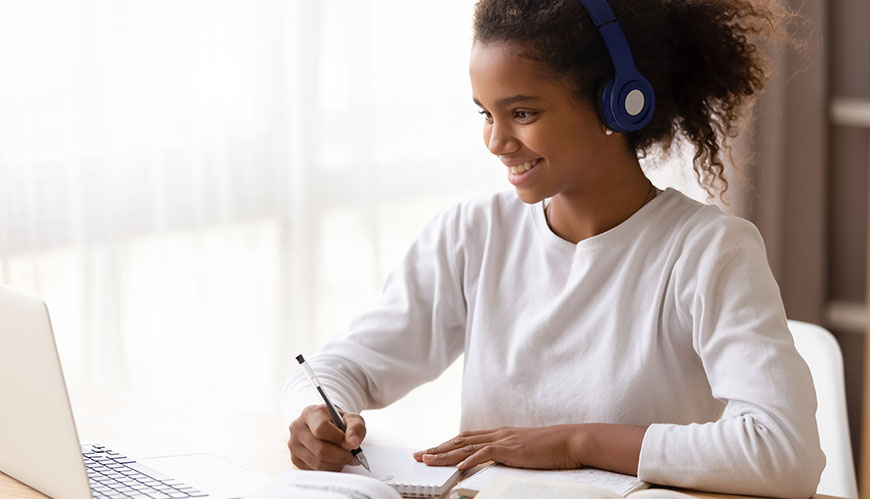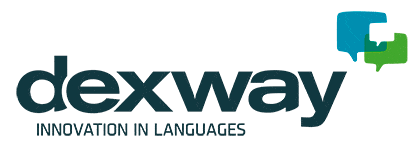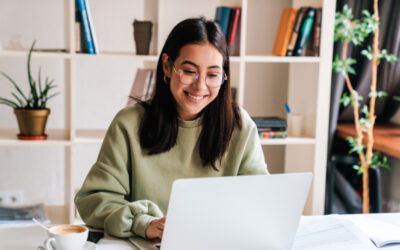The Dexway Flipped Classroom is the most efficient methodology to implement in a language school for many reasons. By implementing this method, all the drawbacks associated with forming groups by level are easily solved. Dexway + Flipped Classroom offer a method that combines the benefits of on-site teaching with the advantages of online training. In this sense, the Dexway methodology gives the leading role to the training modality that has experienced an extraordinary boom all over the world: The flipped classroom. This diversity of backgrounds and expertise poses a great challenge for language centres, as they must form groups that allow them to optimise their resources in terms of classrooms, teachers and timetables.
The flipped classroom presents itself as a powerful solution to address this complexity. By allowing students to acquire fundamental knowledge autonomously and at their own pace, it eliminates the need to group students solely on the basis of their level of ability. Instead of relying solely on a rigid division, language centres can implement more flexible and personalised strategies, adapting to the individual needs of each student.

How does Dexway Flipped Classroom work?
The flipped classroom, in its essence, transforms the traditional way of teaching by altering the distribution of time and the structure of classes. Instead of students receiving a lecture in the classroom and then doing homework at home, the flipped classroom method proposes to reverse this process. In other words, students have access to learning materials, such as videos, readings or presentations, before the face-to-face class. In this way, they can acquire the fundamental knowledge autonomously and at their own pace.
Upon arrival in the classroom, time is optimised to encourage active interaction and collaborative learning. Teachers become facilitators of knowledge, dedicated to resolving doubts, promoting enriching discussions, and guiding students towards the practical application of what they have learned. This interactive approach allows for adaptation to the individual needs of each student, providing an environment conducive to personalisation and differentiated attention.
The Flipped Classroom respects individual progress, allowing students at different levels to work at their own pace to reach the same goal.
Flipped Learning is a pedagogical approach in which direct instruction moves from the group learning space to the individual learning space, and the resulting group space is transformed into a dynamic, interactive learning environment where the educator guides students(…) *
*Flipped Learning Network (FLN). (2014) The Four Pillars of FLIP™
The four pillars of FLIP
- #1 Flexible Environment
- #2 Learning Culture
- #3 Intentional Content
- #4 Professional Educator
The flipped classroom presented by Dexway
Dexway, a leader in online, blended and face-to-face educational solutions, presents a flipped classroom method that transforms traditional teaching tasks. This approach shifts the study of lessons out of the classroom, allowing students to acquire knowledge autonomously and at their own pace.
In turn, it maximises the value of face-to-face class time, whether at the school or through the virtual classroom, by focusing on enhancing social interaction and fostering enriching collaborative learning. This unique combination of self-direction and active participation promotes a more complete and meaningful learning process for students.
How does Dexway help to form groups?
In addition to addressing the disadvantages associated with the creation of level groups, the flipped classroom offers other significant advantages. On the one hand, it allows language schools to expand what they offer and attract new students at any time during the course. Students can join existing groups without having to wait for new classes to open, which increases flexibility and facilitates the enrolment process.
On the other hand, the flipped classroom encourages autonomy and responsibility in learning. By taking a more active role in the acquisition of prior knowledge, students develop self-regulation and self-direction skills. This prepares them to face the challenges of lifelong learning and provides them with the necessary tools to be autonomous and continuous learners.
You can find out more about how Dexway can help you form more homogeneous groups in your classrooms by downloading our e-book:





